This week’s newsletter features photos, paintings, and drawings. Your email may not show the entire message. Click on “View entire message” to make sure you can see the whole newsletter.
Pablo Picasso is a complex subject. He was not what one would consider a good person, particularly towards women, and his art and its role in modern art history are undeniable. Even if you're not an art person, he is an artist you can name. His work changed the way I draw.
If you enjoy reading my newsletter, please consider leaving a heart (like) and/or leaving a comment. It does help people find my work.
Pablo Picasso (October 25, 1881 – April 8, 1973)
Dogs Were Always a Part of Picasso’s Life and Work
Picasso, considered a childhood art prodigy, was 14 years old when he painted his dog, a spaniel mix named Cliper.

Throughout his lifetime, he lived with many dogs: Gat, Feo, Yan, a Boxer; Perro, a Dalmatian; Frika, a half-German Shepherd, half-Breton Spaniel; and three Afghan Hounds: Kabul, Kazbek, and Sauterelle. Most of these dogs make appearances in his work. Picasso also lived with doves, pigeons, an owl named Ubu, and a goat named Esmeralda, all of whom are also subjects in his oeuvre.
An early period painting (1905), not quite in his official Blue Period (1901-04), but still using those colors. I could not find who this dog is.
Lump: Picasso’s most famous dog
"Lump is not a dog, not a man - he really is someone else." - Picasso
April 19, 1957, photographer David Douglas Duncan brought his dog, a Dachshund named Lump (German word for rascal), to a photoshoot at Picasso’s home, Villa La Californie, outside of Cannes, France. Picasso was a frequent subject for Duncan. Working together, they became friends.
Duncan's book Picasso & Lump: A Dachshund’s Odyssey describes the day that Lump and Picasso met. During lunch, Picasso asked if Lump had his own plate. Duncan said he didn’t, so Picasso painted Lump’s portrait directly on a plate for him.
Picasso seemed taken with Lump, and Lump felt the same. Duncan said, “Lump had found his Shangri La.” So Lump stayed, continuing to live with Picasso and family for six years. Then needing special spine treatment, Lump returned to live with Duncan.
Almost all of the information I could find about Picasso and Lump’s relationship is from Duncan’s book. There is another, more recent book, Picasso and His Dogs, that I look forward to adding to my library. I welcome another perspective, one that is not influenced by a friendship with Picasso.
Lump stars in Picasso’s Las Meninas Suite
As a teenager, Picasso admired Diego Velázquez’s 1656 portrayal of a Spanish princess and her entourage, “Las Meninas” (The Maids of Honor). This royal family portrait is regarded as one of the most significant paintings in Western art history.
In 1957, Picasso worked on his interpretation, creating more than 40 works based on Las Meninas, with Lump appearing in 15 versions.
Here is Velázquez’s 1656 “Las Meninas”

Here is one of Picasso’s Las Meninas. There is Lump at the bottom of the canvas, replacing the Spanish Matiff in the original.
There are 14 other Lump variations that I will save for future newsletters or as a subject to explore for paid subscribers. It is interesting and fun to see how Picasso worked Lump into the variations.
Additionally, I could explain why many great artists are obsessed with Velázquez’s original. It has been reimagined by many artists, including Francis Bacon, John Singer Sargent, Salvador Dalí, and Carrie Mae Weems. At first glance, you may wonder why. I certainly did.
Lump: One Continuous Line
The first time I saw an image of Lump was Picasso’s famous drawing, entitled Dog, where Lump is reduced to a single continuous line.
It was the late 90s when I was teaching myself to draw and paint. I learned that one-liners are drawings where the drawing implement touches the paper and remains in contact with the paper until the drawing is finished. There is no lifting pen, pencil, charcoal, or brush until you have completed the drawing.
Here is another of Picasso’s continuous line dog drawings.
He drew many subjects in one line, all of which can be seen in Picasso’s One Liners.
It is more challenging than it sounds, forcing one’s hand and eyes to work together requires a lot of coordination. I began to draw this way.
Here are a few of my one-liners from circa 2013, featuring a thin line.
A selection of current one-liners with a thick line. All are done by hand on paper with dye ink and scanned into my computer.
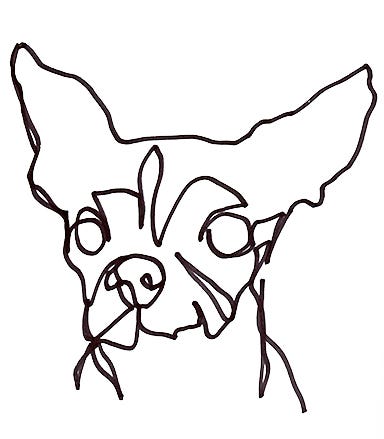
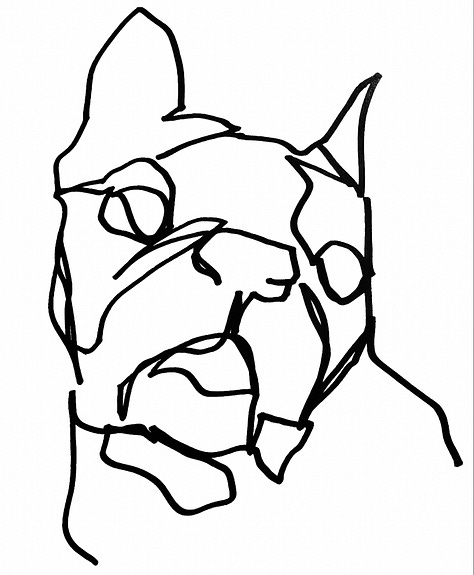
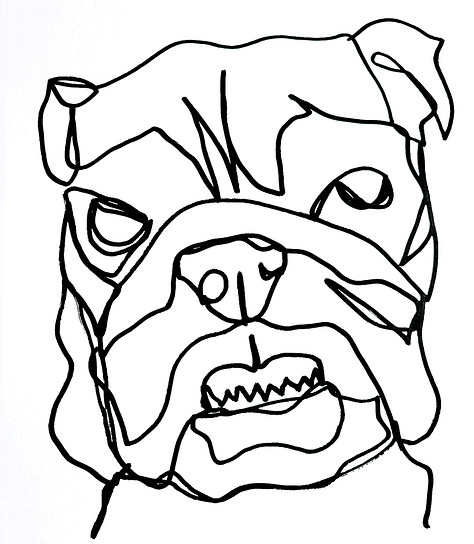
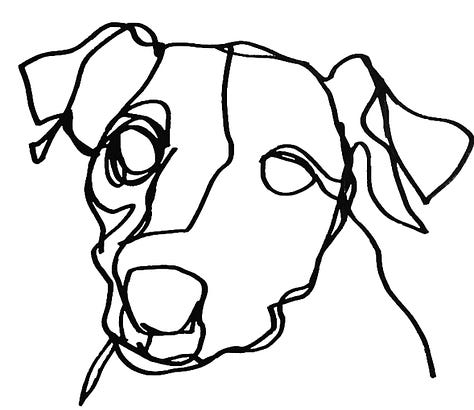

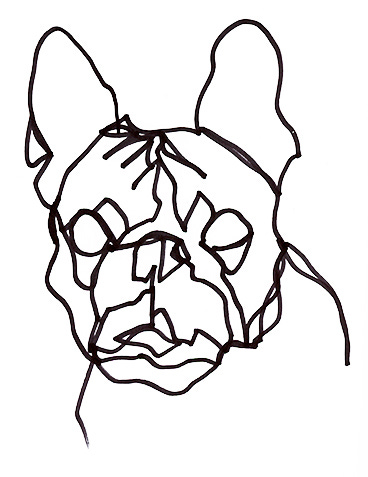
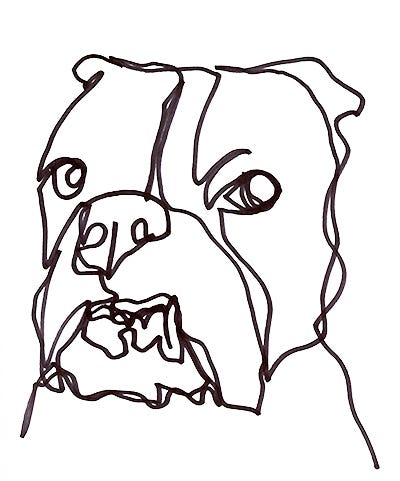

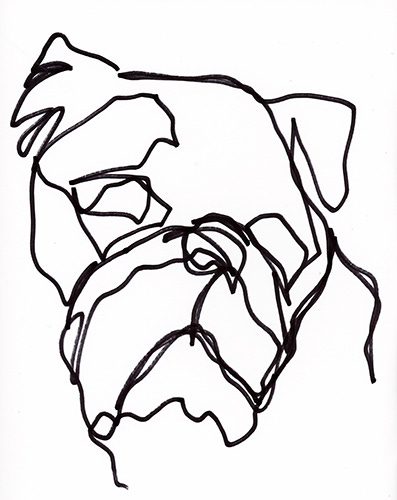
In April 1973, Lump died one week before Picasso.
Further Reading and References:
Picasso’s Other Muse, of the Dachshund Kind
The Dog in Art by Susie Green showcases 150 canine images to tell the story of dogs in art from ancient times to the present.




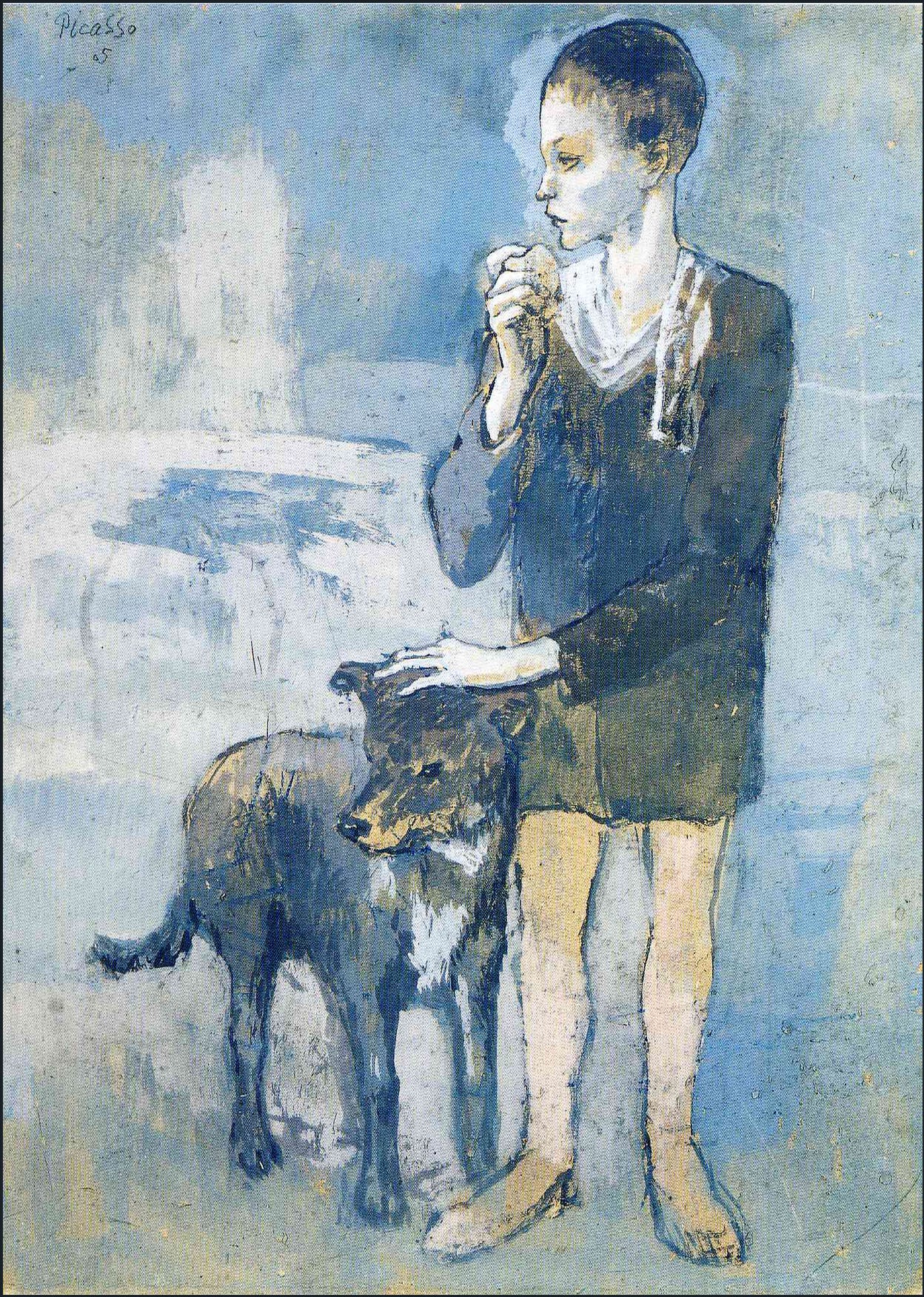







I cannot believe the first piece you showed was done when he was FOURTEEN!